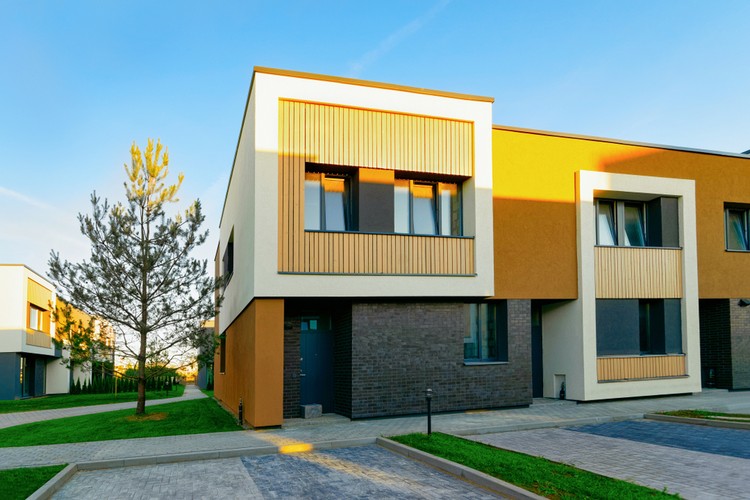Modular Homes: A Comprehensive Guide to Modern, Efficient Housing
Modular homes are revolutionizing the housing industry, offering an innovative approach to homeownership that combines efficiency, affordability, and customization. These factory-built structures are gaining popularity as a viable alternative to traditional site-built homes, providing prospective homeowners with a range of options to suit their needs and preferences. In this comprehensive guide, we'll explore the world of modular houses, their benefits, and what you need to know before making a purchase.

What exactly are modular houses?
Modular houses are pre-fabricated homes constructed in sections, or modules, within a controlled factory environment. These modules are then transported to the building site and assembled on a prepared foundation. Unlike mobile homes, modular houses are designed to be permanent structures that adhere to local building codes and standards. The modular construction process allows for greater precision, reduced waste, and faster build times compared to traditional on-site construction methods.
How do modular houses differ from traditional homes?
The primary difference between modular and traditional homes lies in the construction process. While traditional homes are built entirely on-site, modular houses are largely constructed in a factory setting. This controlled environment minimizes weather-related delays and allows for stricter quality control measures. Additionally, modular homes often incorporate advanced engineering techniques and materials, resulting in structures that can be as sturdy, if not sturdier, than their site-built counterparts.
What are the benefits of choosing a modular home?
Opting for a modular home offers several advantages:
-
Faster construction: Modular houses can be built in a fraction of the time required for traditional homes, often reducing build time by 30-50%.
-
Cost-effectiveness: Factory construction and streamlined processes often result in lower overall costs.
-
Quality control: The controlled environment allows for consistent quality and reduced risk of weather-related damage during construction.
-
Energy efficiency: Many modular homes are designed with energy-efficient features, potentially lowering utility costs.
-
Customization: Contrary to popular belief, modular houses offer a wide range of customization options to suit individual preferences.
How do I buy modular houses?
The process of buying a modular home involves several steps:
-
Research: Explore different modular home manufacturers and their offerings.
-
Choose a design: Select a base model or work with a designer to create a custom plan.
-
Find land: Secure a suitable plot of land for your modular home.
-
Obtain financing: Arrange financing, which may differ slightly from traditional home loans.
-
Site preparation: Prepare the land and foundation for the modular home installation.
-
Delivery and assembly: Coordinate with the manufacturer for the delivery and on-site assembly of your home.
When looking for modular houses for sale, it’s essential to work with reputable manufacturers and local dealers who can guide you through the process and ensure compliance with local building codes.
What options are available for modular houses with 3 bedrooms?
Modular houses with 3 bedrooms are a popular choice for families and those seeking extra space. These homes come in various layouts and sizes, typically ranging from 1,000 to 2,500 square feet. Some common features of 3-bedroom modular homes include:
-
Open-concept living areas
-
Master suites with en-suite bathrooms
-
Flexible floor plans for customization
-
Energy-efficient appliances and fixtures
-
Optional additions like garages or porches
When exploring modular houses with 3 bedrooms, consider factors such as the overall square footage, room sizes, and the layout that best suits your lifestyle and needs.
How do modular homes compare in cost to traditional houses?
The cost of modular homes can vary significantly based on factors such as size, customization, and location. However, they are generally considered more affordable than traditional site-built homes. Here’s a comparison of average costs:
| Housing Type | Average Cost per Square Foot | Estimated Total Cost (2,000 sq ft home) |
|---|---|---|
| Modular Home | $90 - $150 | $180,000 - $300,000 |
| Traditional Home | $100 - $200 | $200,000 - $400,000 |
Prices, rates, or cost estimates mentioned in this article are based on the latest available information but may change over time. Independent research is advised before making financial decisions.
It’s important to note that while the base price of a modular home may be lower, additional costs such as land purchase, site preparation, and utility connections should be factored into the overall budget. Despite these additional expenses, modular homes often remain a more cost-effective option due to their efficient construction process and reduced on-site labor requirements.
In conclusion, modular homes offer an attractive alternative to traditional housing, combining efficiency, affordability, and customization. As the demand for sustainable and cost-effective housing solutions continues to grow, modular construction is likely to play an increasingly significant role in the housing market. Whether you’re a first-time homebuyer or looking to downsize, exploring modular houses for sale could be the key to finding your ideal home.




